Upgrading your home with affordable solar air heating can slash your energy bills by up to 30% while improving indoor air quality. You'll have options like glazed, unglazed, or transpired collectors to suit your climate and budget. Before installation, assess your home's suitability by evaluating solar exposure, insulation, and available space. Proper planning guarantees ideal system size and efficiency. While initial costs range from $3,000 to $15,000, you'll recoup your investment through significant long-term savings. Regular maintenance keeps your system running smoothly for 20-30 years. With tax incentives and rebates available, now's the perfect time to harness the sun's power for a cozier, greener home.
Benefits of Solar Air Heating

Three key benefits make solar air heating an attractive option for homeowners.
First, you'll see significant energy savings. Solar air heaters can reduce your heating costs by up to 30%, depending on your location and home's design. They work by capturing the sun's energy to heat air, which is then circulated throughout your home, reducing the load on your primary heating system.
Second, you'll enjoy improved indoor air quality. Solar air heaters continuously circulate fresh, heated air from outside, reducing humidity and preventing the buildup of indoor pollutants. This can be especially beneficial if you have allergies or respiratory issues.
Lastly, you'll contribute to a greener environment. By harnessing renewable solar energy, you'll reduce your carbon footprint and reliance on fossil fuels. Solar air heaters have no emissions and require minimal maintenance, making them an eco-friendly choice for environmentally conscious homeowners.
Additionally, these systems are often eligible for tax credits and incentives, further offsetting their already affordable installation costs.
With a typical lifespan of 20-30 years, solar air heaters offer long-term benefits that make them a smart investment for your home.
Types of Solar Air Collectors
Now that you understand the benefits of solar air heating, let's explore the different types of solar air collectors available. There are three main categories: glazed, unglazed, and transpired collectors.
Glazed collectors feature a glass or plastic cover over an absorber plate. They're highly efficient and can heat air to higher temperatures, making them ideal for colder climates.
These collectors often integrate with your existing HVAC system, providing supplemental heating during winter months.
Unglazed collectors are simpler and more affordable. They consist of a dark-colored absorber plate without a cover.
While less efficient than glazed models, they're excellent for moderate climates and can effectively heat your home during shoulder seasons.
Transpired collectors, also known as perforated plate collectors, are the most recent innovation. They use a dark, perforated metal plate mounted on a south-facing wall.
As air is drawn through the tiny holes, it's heated by the sun-warmed metal. These collectors are highly efficient and work well in commercial and industrial settings.
When choosing a solar air collector, consider your climate, budget, and heating needs.
Each type has its advantages, so you'll want to weigh your options carefully to find the best fit for your home.
Choosing the Right System

Selecting the right solar air heating system for your home involves several key considerations.
First, assess your heating needs by evaluating your climate, home size, and existing insulation. This will help you determine the required collector size and system capacity.
Next, consider your roof's orientation and available space. South-facing roofs with a 30-45 degree tilt are ideal for maximum sun exposure. If your roof isn't suitable, ground-mounted collectors might be an option.
Examine your budget and long-term energy goals. While initial costs vary, remember that solar heating systems offer significant savings over time. Compare the efficiency ratings of different models to guarantee you're getting the best value for your investment.
Think about integration with your current heating system. Some solar air heaters work alongside existing furnaces, while others can function independently. Choose a system that complements your home's infrastructure.
Don't forget about maintenance requirements. Some systems need more frequent cleaning or part replacements than others. Factor this into your decision to avoid unexpected costs down the line.
Lastly, check local building codes and permit requirements before making your final choice. Make sure your selected system complies with all regulations to avoid future complications.
Assessing Your Home's Suitability
Before diving into solar air heating installation, it's crucial to evaluate your home's suitability for this technology.
Start by examining your home's solar exposure. You'll need a south-facing wall or roof that receives direct sunlight for most of the day, particularly during winter months when heating is most needed.
Next, consider your home's insulation and air-tightness. Well-insulated homes retain heat better, maximizing the efficiency of solar air heating systems. If your home lacks proper insulation, address this issue before installing solar heating.
Examine your current heating system and energy costs. Solar air heating works best as a supplement to existing systems, so you'll need to determine how it can integrate with your current setup.
Evaluate your available space. Solar air collectors require a certain amount of surface area to be effective. Measure potential installation sites to verify you have enough room.
Planning Your Installation

To plan your sun-powered heating installation, you'll need to conduct a thorough site assessment.
This process involves evaluating your property's sun exposure, roof orientation, and any potential shading obstacles.
Once you've gathered this information, you can work with a solar professional to determine the ideal system size that meets your heating needs and fits within your budget.
Site Assessment Process
When planning your solar heating installation, a thorough site assessment is essential for maximizing efficiency and cost-effectiveness.
Begin by evaluating your property's solar exposure. Identify the areas that receive the most direct sunlight throughout the day, considering obstacles like trees or buildings that may cast shadows.
Next, assess your roof's condition, orientation, and pitch. South-facing roofs with a 30-45 degree tilt are ideal for solar collectors. If your roof isn't suitable, ground-mounted systems might be an alternative.
Don't forget to check local zoning laws and homeowners' association regulations that may affect installation.
Analyze your home's current heating system and energy consumption. This information will help determine the size and type of solar heating system you'll need.
Consider factors like your climate, hot water usage, and desired indoor temperature.
Evaluate your available space for equipment installation, both inside and outside your home. You'll need room for storage tanks, pumps, and controllers.
Choosing Optimal System Size
Determining the ideal size for your solar heating system involves three key factors: your home's heating requirements, available installation space, and budget constraints.
To assess your heating needs, consider your home's square footage, insulation quality, and local climate. Calculate your average energy consumption during winter months to get a baseline for system sizing.
Next, evaluate your available installation space. Roof-mounted systems require unobstructed, south-facing areas, while ground-mounted options need clear, open spaces. Measure potential installation sites and factor in any shading from nearby structures or trees.
Your budget will also influence system size. While larger systems produce more heat, they're costlier upfront. Balance initial costs with long-term savings to find the sweet spot. Don't forget to account for potential incentives or rebates that may offset expenses.
Once you've gathered this information, consult with a solar professional to determine the best system size. They'll help you choose between active and passive systems, recommend appropriate collector types, and suggest storage solutions.
Required Tools and Materials
Gathering the right tools and materials is essential for building your affordable sun-powered heating system. You'll need a mix of common household items and specialized components to create an efficient solar heating solution. Here's a breakdown of what you'll require:
| Tool/Material | Purpose | Estimated Cost |
|---|---|---|
| PVC pipes | Frame construction | $20-$30 |
| Black paint | Heat absorption | $10-$15 |
| Plexiglass sheets | Glazing | $30-$50 |
| Insulation foam | Heat retention | $25-$40 |
For tools, you'll need a saw, drill, screwdriver, and measuring tape. Don't forget safety equipment like gloves and goggles. The heart of your system will be the solar collector, which you can build using recycled materials like aluminum cans or copper tubing. You'll also need a small pump to circulate the heated fluid and a storage tank to hold it.
For the control system, invest in a thermostat and temperature sensors. These will help regulate the heat flow and maximize efficiency. Finally, consider purchasing a backup heating element to guarantee consistent warmth during cloudy periods. With these tools and materials, you'll be well-equipped to create your DIY sun-powered heating system.
Step-by-Step Installation Guide

Ready to turn your solar heating vision into reality? Begin by positioning your solar collectors for ideal sun exposure, typically on a south-facing roof or wall. Secure the mounting brackets, confirming they're level and firmly attached to your structure.
Next, install the collectors, connecting them to the brackets and each other if you're using multiple panels.
Now, it's time to set up your heat transfer system. Install the storage tank in a suitable indoor location, preferably close to your existing heating system. Connect the solar collectors to the storage tank using insulated piping, making sure to create a continuous loop.
Install the circulation pump and controller according to the manufacturer's instructions.
Add heat transfer fluid to the system, carefully following the recommended mixture ratios. Purge any air from the lines to guarantee efficient circulation.
Connect the solar heating system to your existing heating setup, integrating it with your furnace or boiler.
Integrating With Existing HVAC
When integrating sun-powered heating solutions with your existing HVAC system, you'll need to evaluate compatibility issues.
You can explore hybrid heating options that combine solar thermal with your current setup, maximizing efficiency and reducing reliance on traditional energy sources.
Compatibility With Current Systems
Three key factors determine how easily solar heating systems can integrate with existing HVAC setups: system type, available space, and energy requirements.
If you have a forced-air system, you'll find it easier to incorporate solar heating. The existing ductwork can distribute solar-heated air throughout your home.
For hydronic systems, you can connect solar thermal collectors to your boiler or radiant floor heating. Heat pump systems may require additional components to effectively use solar energy.
Space availability is essential. You'll need room for solar collectors, either on your roof or in your yard.
Additionally, you might need space for a heat exchanger or storage tank inside your home. Consider your property's layout and available area before committing to a solar upgrade.
Your home's energy needs play an important role in determining compatibility. Solar heating systems work best when sized appropriately for your space and climate.
You'll want to assess your current energy consumption and heating demands to guarantee the solar solution can meet your requirements.
Hybrid Heating Options
While solar heating can be an excellent standalone solution, integrating it with your existing HVAC system often provides the best of both worlds.
Hybrid heating options allow you to harness the sun's energy while maintaining the reliability of your conventional system. You'll benefit from reduced energy costs and a smaller carbon footprint without sacrificing comfort on cloudy days or during extreme weather.
To create a hybrid system, you can add solar collectors to your existing setup. These collectors preheat the air or water used by your furnace or boiler, reducing the workload on your primary heating source.
You'll need a controller to manage the interaction between the solar and conventional components, ensuring seamless operation.
Another option is to install a solar-assisted heat pump. This technology combines the efficiency of a heat pump with solar thermal energy, boosting performance and reducing electricity consumption.
You can also consider a dual-fuel system that automatically switches between solar and conventional heating based on which is more efficient at any given time.
Maximizing Efficiency and Performance
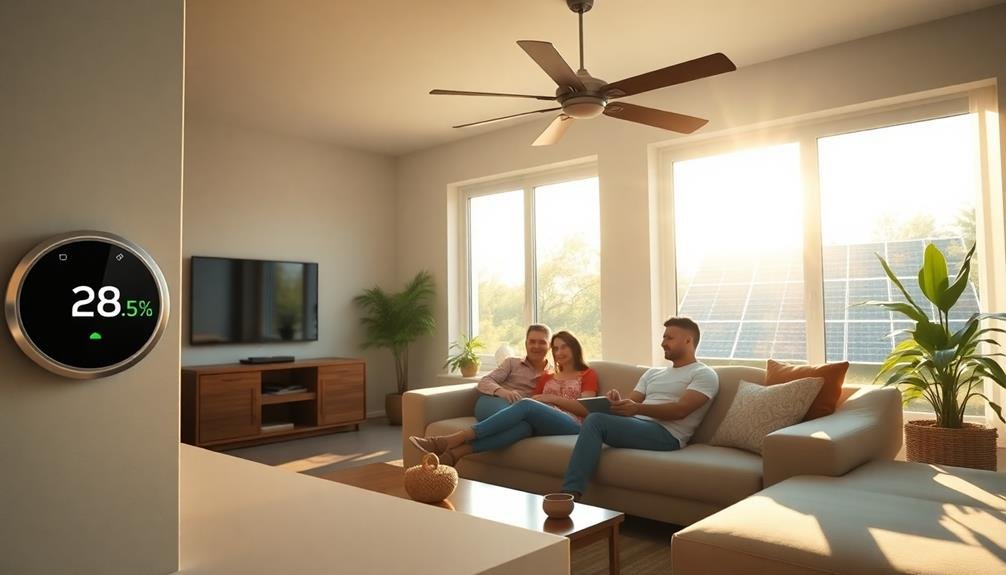
Optimizing your sun-powered heating system's efficiency can drastically reduce energy costs and boost performance. Start by guaranteeing proper insulation throughout your home, focusing on windows, doors, and attics. This prevents heat loss and maximizes the system's effectiveness.
Regularly clean and maintain your solar collectors to remove dust and debris that can hinder sunlight absorption. Install smart thermostats to regulate temperature efficiently and program heating schedules based on your daily routines.
Consider adding thermal mass elements like concrete floors or water tanks to store and distribute heat more evenly. Implement zoning systems to heat specific areas of your home as needed, rather than wasting energy on unoccupied spaces.
Utilize reflective surfaces around your solar collectors to increase sunlight capture. Position furniture and curtains to allow maximum sunlight penetration during winter months.
Don't forget to regularly service your system, checking for leaks, inspecting pumps, and verifying proper fluid levels. Finally, monitor your system's performance using energy tracking tools to identify areas for improvement and guarantee peak efficiency year-round.
Maintenance and Troubleshooting
Maintaining your affordable sun-powered heating system is essential for its longevity and efficiency.
You'll need to perform regular cleaning and inspections, address common issues promptly, and consider professional maintenance services for complex problems.
Regular Cleaning and Inspection
Regular cleaning and inspection are essential for keeping your sun-powered heating system in top shape. You'll need to perform these tasks at least twice a year, ideally in spring and fall. Start by checking the solar panels for dirt, debris, or damage. Clean them gently with a soft cloth and mild soap solution, avoiding abrasive materials that could scratch the surface.
Inspect the mounting hardware, ensuring all bolts and brackets are tight and secure. Check the wiring connections for any signs of wear or corrosion. Don't forget to examine the storage tank, pipes, and valves for leaks or damage.
Here's a quick checklist to guide your maintenance routine:
| Component | Spring | Fall |
|---|---|---|
| Solar Panels | Clean, check for damage | Clean, check for damage |
| Mounting Hardware | Tighten bolts | Tighten bolts |
| Wiring | Inspect connections | Inspect connections |
| Storage Tank | Check for leaks | Check for leaks |
| Pipes and Valves | Inspect for damage | Inspect for damage |
Common Issues and Fixes
Sun-powered heating systems' reliability doesn't mean they're immune to issues. You might encounter problems like reduced efficiency, leaks, or system failures. To keep your system running smoothly, familiarize yourself with common issues and their solutions.
If you notice a decrease in hot water output, check for mineral buildup in the collectors or pipes. Flush the system with a descaling solution to restore efficiency.
Leaks often occur at connection points, so inspect fittings and valves regularly. Tighten loose connections or replace worn-out parts as needed.
For air-based systems, clogged filters can greatly reduce performance. Clean or replace filters every few months to maintain ideal airflow.
If your system isn't producing heat, verify that the pump is working correctly. A faulty pump may need replacement or repair by a professional.
Frozen pipes are a risk in colder climates. Verify your system has adequate antifreeze protection and proper insulation.
If you suspect a frozen pipe, shut off the system and contact a technician to prevent damage.
Professional Maintenance Services
A toolbox full of DIY skills can keep your sun-powered heating system running smoothly, but sometimes you'll need professional help. When your system faces complex issues or requires specialized maintenance, it's time to call in the experts.
Professional maintenance services offer thorough inspections, advanced diagnostics, and expert repairs that guarantee your solar heating system operates at peak efficiency.
Regular professional check-ups can prevent major breakdowns and extend your system's lifespan. These services typically include:
- Thorough cleaning of solar collectors and heat exchangers
- Inspection and calibration of control systems and sensors
- Pressure testing and fluid replacement in closed-loop systems
Don't wait for a complete system failure before seeking professional help. Schedule annual maintenance visits to catch potential problems early.
When choosing a service provider, look for certified solar thermal technicians with experience in your specific system type. They'll have the knowledge and tools to address intricate issues and optimize your system's performance.
Cost Analysis and Savings

Dollars and cents speak volumes when evaluating solar heating solutions.
You'll find that the initial investment in a solar heating system can range from $3,000 to $15,000, depending on the size of your home and the complexity of the installation. While this may seem steep, it's crucial to reflect on the long-term savings.
On average, you can expect to reduce your heating bills by 50-80% annually. This translates to savings of $500 to $1,500 per year for most households. Over the system's 20-30 year lifespan, you'll likely recoup your initial investment and then some.
Additionally, many states offer tax incentives and rebates for solar installations, further offsetting your costs.
Don't forget to factor in increased property value. Homes with solar heating systems typically sell for 3-4% more than comparable properties without them.
You'll also be shielded from rising energy costs, as your primary heat source is free and abundant sunlight.
When you crunch the numbers, you'll find that solar heating isn't just an eco-friendly choice—it's a smart financial decision that pays dividends for years to come.
Government Incentives and Rebates
Government support plays a crucial role in making solar heating systems more accessible. You'll find various incentives and rebates at federal, state, and local levels that can considerably reduce your initial investment. The federal government offers a 30% tax credit for solar water heating systems, which can save you thousands of dollars. Many states provide additional tax credits, grants, or low-interest loans to further offset costs.
To maximize your savings, follow these steps:
- Research your state's specific solar incentives on the Database of State Incentives for Renewables & Efficiency (DSIRE) website.
- Check with your local utility company for any rebates or special programs they offer for solar heating installations.
- Consult a tax professional to make sure you're claiming all eligible credits and deductions on your tax returns.
Don't forget to look into property tax exemptions for solar improvements, which can protect you from increased property taxes due to your home's higher value.
Some municipalities also offer expedited permitting processes for solar installations, saving you time and potential fees. By taking advantage of these government incentives, you'll make your solar heating project more affordable and see a faster return on your investment.
Future Trends in Solar Heating

As solar heating technology continues to evolve, you'll see exciting advancements that promise to make these systems even more efficient and accessible.
In the coming years, you can expect to see improvements in solar panel efficiency, allowing for greater energy capture in smaller surface areas. This will make solar heating more viable for homes with limited roof space.
You'll also witness the rise of smart solar heating systems that integrate with your home's IoT devices. These systems will optimize energy usage based on your habits and weather forecasts, further reducing your energy bills.
Additionally, advancements in energy storage technology will allow you to store excess solar energy more efficiently, ensuring a steady supply of heat even during cloudy days or at night.
Keep an eye out for new solar thermal materials that can absorb and retain heat more effectively. These innovations will lead to more compact and powerful solar heating units.
Ultimately, you'll likely see a trend towards modular solar heating systems, making installation and upgrades easier and more cost-effective for homeowners like you.
Frequently Asked Questions
Can Solar Air Heating Systems Work in Cold Climates With Limited Sunlight?
Yes, solar air heating systems can work in cold climates with limited sunlight. You'll still benefit from reduced energy costs, though efficiency may be lower. They're most effective on sunny days, even in cold temperatures.
How Long Does It Take to See a Return on Investment?
You'll typically see a return on investment for solar air heating systems within 3-7 years. Your payback period depends on factors like installation costs, energy prices, and local climate. Don't forget to take into account available incentives and rebates.
Are There Any Health Risks Associated With Solar Air Heating?
You'll be pleased to know that solar air heating doesn't pose significant health risks. It's a clean, safe technology that doesn't emit harmful substances. However, guarantee proper installation to avoid potential moisture issues in your home.
Can Solar Air Heating Be Used for Cooling in Summer Months?
Solar air heating systems aren't designed for cooling. However, you can use them for ventilation in summer. If you're looking for cooling, consider solar-powered air conditioning or other passive cooling methods for your home instead.
What Happens to Excess Heat Generated by Solar Air Heating Systems?
You'll find that excess heat from solar air heating systems can be stored in thermal mass materials like concrete or water tanks. You can also use it to heat your water or redirect it to other areas of your home.
In Summary
You've now got the knowledge to harness the sun's power for heating your home. Whether you choose a DIY approach or professional installation, solar air heating can considerably reduce your energy bills and carbon footprint. Don't forget to check for local incentives to maximize your savings. As technology advances, you'll find even more efficient and affordable options. Embrace this sustainable solution and enjoy the warmth of the sun in your home for years to come.
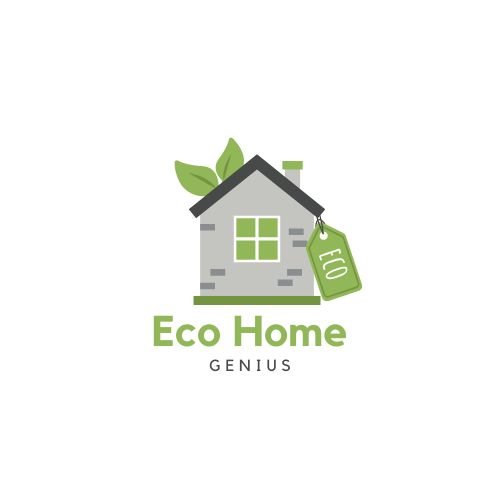
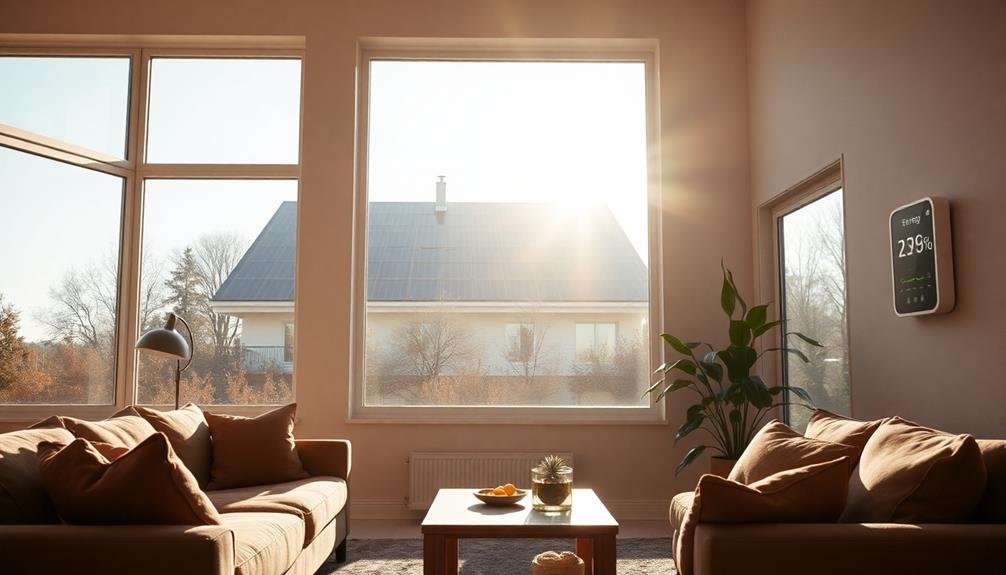
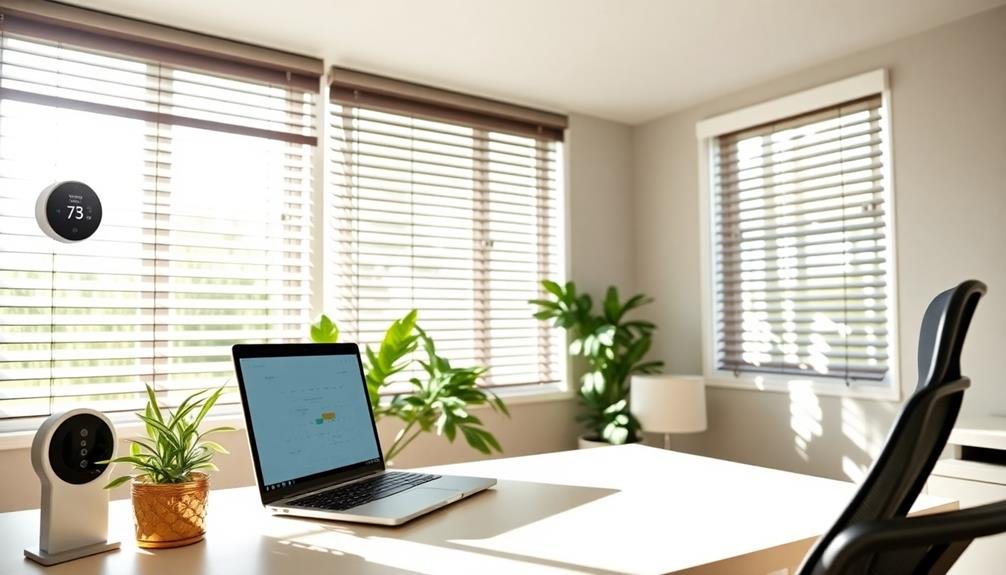
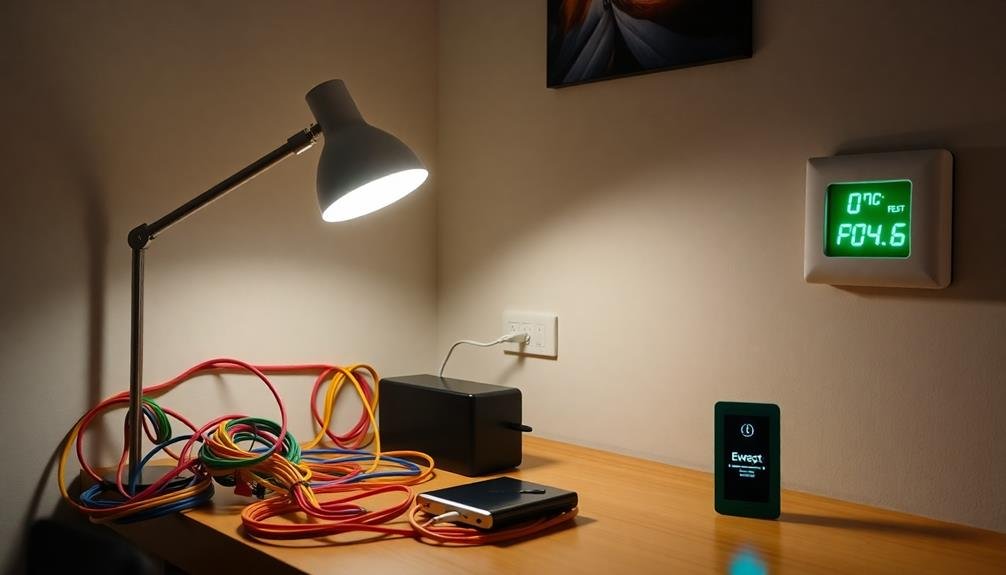
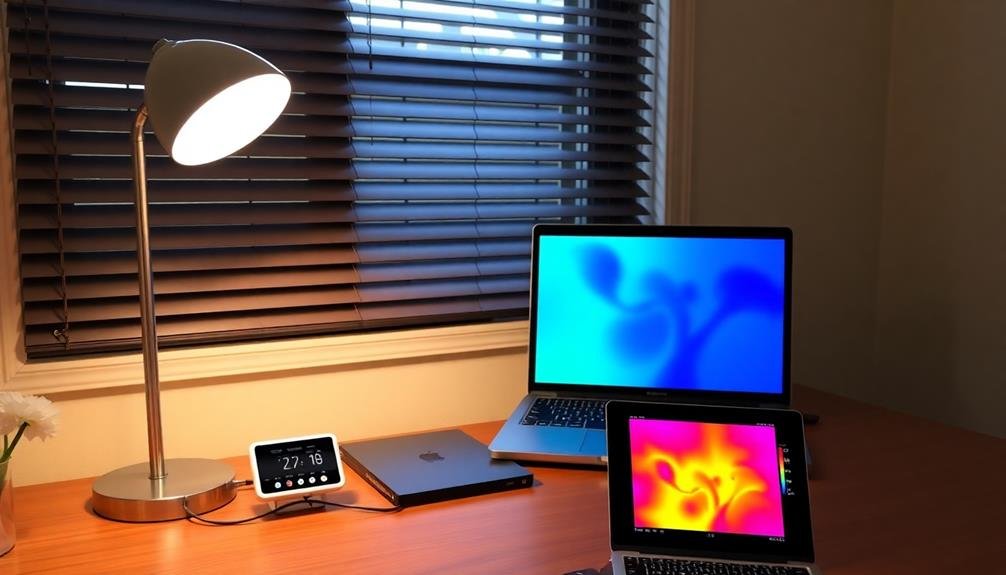
Leave a Reply